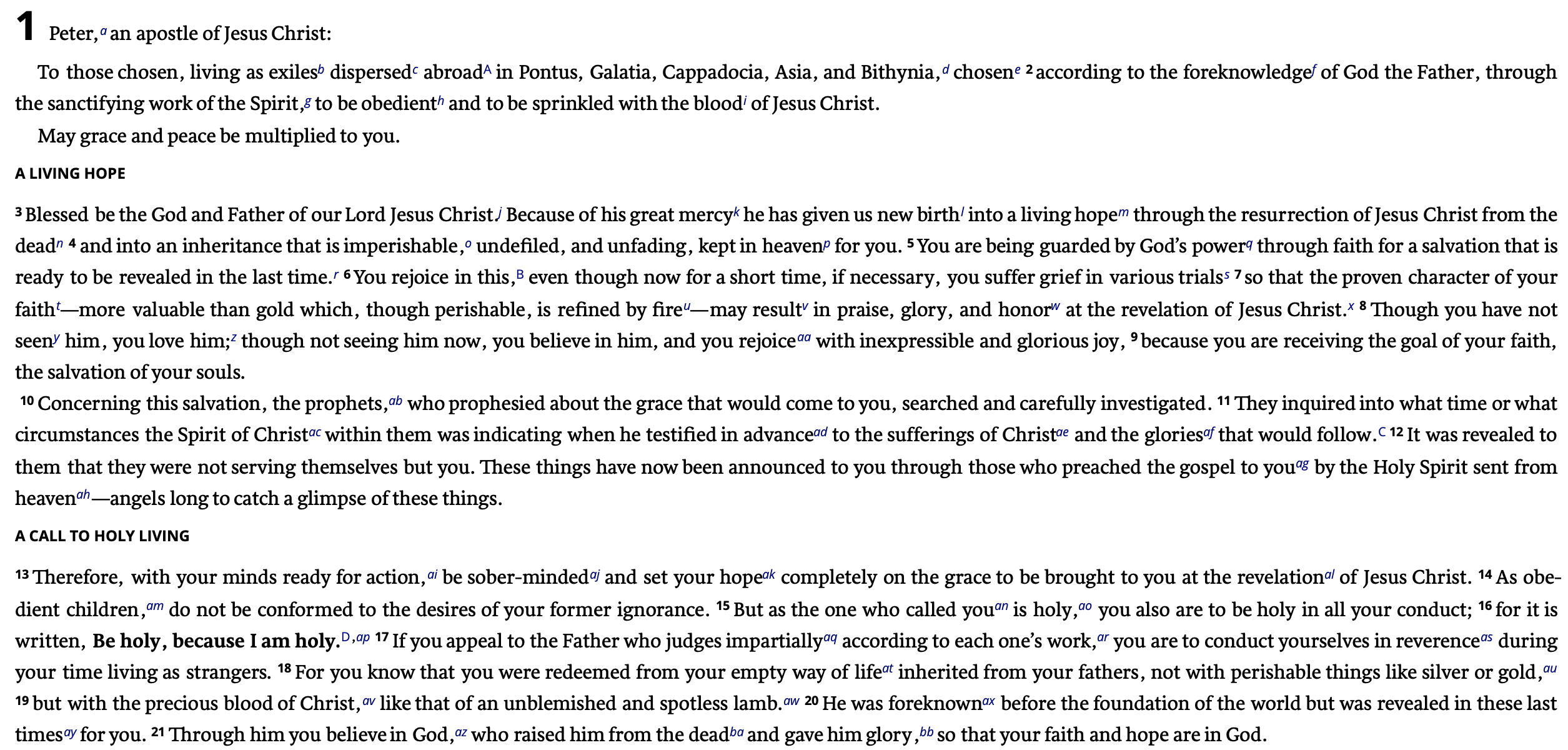On Reading Larger Portions of the Bible
A few weeks ago, I suggested that we should read larger portions of Scripture at a time. In this post, I want to consider a few questions pertaining to the issue: 1) why does it seem unnatural to read like this and 2) how, practically, can I read larger portions.
On the one hand, reading large portions of Scripture seems quite logical. On the other, you will find a large number of Christians who have never done it. Why is there a gap here? The question has a complex answer, but I think one reason concerns Bible typography. Perhaps you are surprised by that answer, but I think it is true. Consider the following image of the Bible:
The way the verses are separated into distinct sections subliminally communicates that each is a section to itself. Of course, I don’t blame versification for someone taking a verse out of its context, yet the format certainly doesn’t help. Philippians 4:13 certainly seems like its own paragraph. To the point we are discussing here, Mark Ward notes that Bible typography like that above gives you implicit permission to not read larger sections. Now consider the following image:
This Bible is formatted according to proper paragraph divisions. It still retains the verse markings and chapter markings. Some Bibles even do away with these (see the link to Mark Ward’s website for further information on such Bibles). For example:
This format makes me think I am looking at a book. It implicitly tells me that it is improper to stop reading without finishing. Certainly, the author of Hebrews would have been quite upset to know that many people read all of Hebrews 11 and stop before getting to 12:2! The point here is simple. Bible typography matters and it implicitly sends messages to us about how we ought to read. I am not suggesting everyone needs to get a new Bible (though that may help). I would suggest, however, that everyone needs to fight against the implicit messaging.
More could be said about that issue, but I want to address one more. How do we handle the challenges presented by reading larger portions of Scripture?
I find that my analytical mind fights against reading large portions. I can do it with all manner of books, but when it comes to the Bible, I want to slow down and analyze. Soon, my plan to read all of Ephesians is foiled by my fifteen-minute foray into the meaning of that peculiar phrase in 1:3. Perhaps you are like me, and you wonder if you can read large sections.
One way I deal with this problem is by listening to the biblical text while reading it. You can find recordings on YouTube of the Bible in nearly any translation. Listen to it in double speed while you read along. This has the added benefit of informing you about the length of the reading. For instance, on the first Sunday of the year, I read through Matthew in one sitting. I found the YouTube video recording, saw it was 2 hours and 26 minutes long. Since I was listening on double speed, I knew it would be 1 hour and 13 minutes to read from start to finish.
So, grab a reader’s Bible (or tell yourself, “I will not listen to the implicit messaging of the versification”), head over to YouTube, and begin reading larger portions. I think you will be surprised not only by what you learn but also by your enjoyment of the practice.







I got a CSB Reader’s Bible for Christmas this year and am thoroughly enjoying it. I’m just astounded because I instantly started reading longer passages, even though I didn’t feel like I was changing my habits at all!
FWIW, in your examples the line length is far too great for the point size. That would discourage long reading as well.
I Agree!